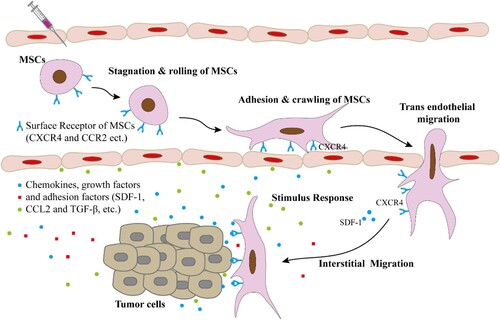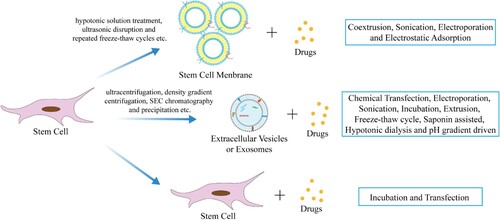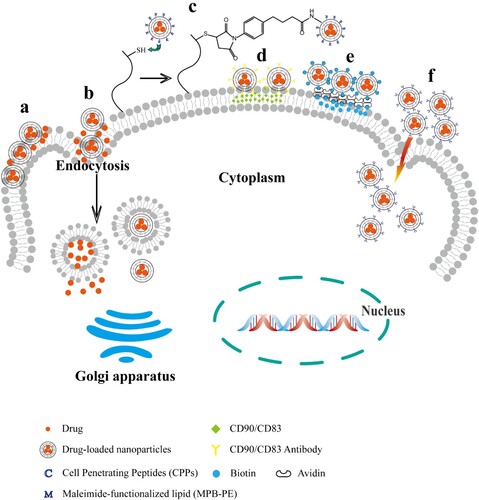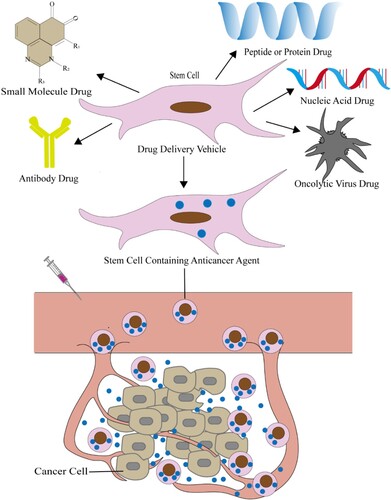Figures & data
Table 1. Researches and developments of stem cell products.
Table 2. Characteristics of stem cell.
Figure 1. Homing/migration of MSCs towards target tissue/cells. Stem cells are injected into the blood vessel, and then participate in the surface adhesion factor-mediated stagnation on the vascular endothelial cells and rolling, adhesion and crawling. Subsequently, stem cells are induced to migrate across endothelial cells through receptor-ligand interaction. Later, chemoattractant-mediated migration in the interstitial of the target tissue and specific interaction with the target cell.

Figure 2. Stem cell and its derivatives as drug vehicle to deliver therapeutic drugs. Cell membranes, extracellular vesicles or exosomes, derived from stem cells, and stem cells themselves are all good drug delivery vehicles which loaded with therapeutic drugs in various ways, thereby delivering the drugs to the target site for the treatment of diseases.

Figure 3. Location of drugs in stem cell and its derivatives-based DDS. a, Surface adsorption caused by electrostatic force, van der Waals force and hydrogen bond. b, Endocytosis of stem cells. c, Chemical bond modification. d, Antigen antibody reaction. e, Biotin reacts with avidin. f, Effects of cell penetrating peptide.

Figure 4. Stem cell as drug vehicle deliver anticancer agents to treat cancer. Stem cells as a vehicle to contain drugs for the treatment of cancer, including small molecule chemotherapeutics, antibody drugs, nucleic acid drugs, polypeptide or protein drugs and oncolytic virus drugs. The drug-loaded stem cells get into the cancer tissue through the blood and release anti-cancer agents. Thereby exerting a therapeutic effect.

Figure 5. Stem cells deliver cargos for tissue repair and regenerative medicine. Stem cell are used in regenerative medicine through transplantation due to their strong self-renewal and multilineage differentiation characteristics, including bone regeneration, cartilage regeneration, myocardial regeneration, nerve regeneration and so on. In addition, stem cell promotes vascular regeneration through powerful paracrine effects, enhance immune regulation and reduce inflammation, promote extracellular matrix and tissue remodeling, thereby promoting tissue damage repair. Stem cell promotes the overexpression of genes such as TGF-β3 and IGF-1 through genetic engineering, and promote tissue repair.

Data availability statement
Data sharing is not applicable to this article as no new data created or analyzed in this study.
